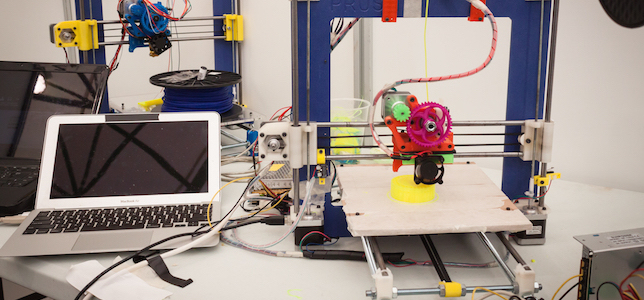The 6 Technologies That Will Change the Face of Education

Makerspaces, wearable technologies and adaptive learning technologies are three of the six technologies that will have a profound impact on higher education within the next five years, according to the NMC Horizon Report: 2015 Higher Education Edition, released Wednesday by the New Media Consortium and the Educause Learning Initiative.
The annual report is developed by a panel of higher education experts to identify major developments in education technology and technological trends that will help shape teaching and learning in the near future. The researchers also identify the six most significant challenges facing education in the coming years.
Technological developments are sorted into three categories: those whose impact will be felt soon (or is being felt now), those that will come into p[lay in the mid-term (two to three years) and those that are a bit further out on the horizon (four to five years).
The Near Term: 1 Year or Less
Leading off the 2015 list of important technological developments in the near term is BYOD, followed by the flipped classroom.
BYOD made this list this year, according to the report, not because it's new or having a major effect on IT spending at this point but because of the growing evidence that BYOD is leading to productivity gains and allowing for more personalized instruction and learning.
"The link between the use of personal devices and increases in productivity gets stronger each passing year as more organizations adopt BYOD policies," according to the report. "The integration of personal smartphones, tablets, and PCs into the workflow supports an on-the-go mentality, changing the nature of work and learning activities so that they can happen anywhere, at anytime. Employers and higher education institutions are finding that when given the opportunity to choose their device, users are saved from the effort and time needed to get accustomed to new devices and can therefore accomplish tasks with more ease and efficiency."
The flipped classroom, which also appeared in last year's Horizon Report as a significant near-term technological development, is a model of teaching in which traditional methods of instruction instruction are experienced outside of the classroom — and where classroom time is spent discussing, rather than presenting, material.
About 29 percent of faculty in the United States are now using flipped instruction to some degree, and another 27 percent plan to add it to their repertoire within a year.
According to the report: "Flipped learning is seen as especially suited for higher education because the rearranging of class time gives students in large introductory lecture courses more opportunity to engage and interact with their peers. Instructors also make more efficient use of their time by focusing on content that is especially challenging for students — handheld clickers in large seminars are often paired with this method in order to help understand students' comprehension of material and customize discussions accordingly."
The Mid-Term: 2 to 3 Years
In the mid-term, researchers identified makerspaces and wearable technologies as significant technological developments.
The report defined makerspaces as "community-oriented workshops where tech enthusiasts meet regularly to share and explore electronic hardware, manufacturing tools, and programming techniques and tricks."